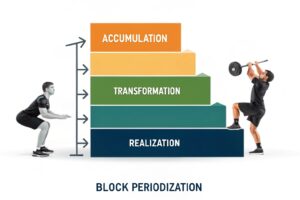Introduction
Periodization is the backbone of any serious muscle‑building program. By cycling your workouts in a structured, scientific way you can avoid plateaus, reduce injury risk, and unlock maximum muscle development. This guide walks you through of periodization, explains why each training phase matters, and shows you how to design a periodized plan that fits any schedule or experience level.
Most beginners think that simply adding weight or increasing volume each week will keep the gains coming. In reality, the human body adapts to a repetitive stimulus incredibly quickly. After just a few sessions, your nervous system, hormones, and muscle fibers become accustomed to the load, causing progress to stall. This is where periodization steps in: it deliberately manipulates training variables—intensity, volume, frequency, and exercise selection—to keep the body “guessing” and constantly adapting.
Whether you’re a natural lifter, a seasoned competitive athlete, or someone who trains for aesthetic goals, a well‑structured periodized program can shave months off your timeline to a stronger, bigger physique. Below we break down each essential phase, the science behind it, and actionable tips you can apply today.
Section 2: Understanding the Core Concepts of Periodization (Periodization Basics)
What Is Periodization?
Periodization is the systematic planning of athletic or strength training. It divides the training year into distinct cycles—macrocycles (annual), mesocycles (monthly), and microcycles (weekly). Each cycle has a specific purpose, such as building endurance, increasing strength, or peaking for a competition. By rotating these focuses, you prevent overtraining and continuously stimulate new muscle growth.
Key Variables: Intensity vs. Volume
Intensity refers to the load relative to your one‑rep max (1RM), while volume is the total work performed (sets × reps × load). Classic periodization models toggle these variables: high‑volume/low‑intensity phases build hypertrophy and work capacity, whereas high‑intensity/low‑volume phases develop maximal strength and neural efficiency. The balance of these two drives your ability to add size and power simultaneously.
Why Cycle Your Workouts?
Cycling creates progressive overload without the dreaded “plateau.” Each new mesocycle offers a fresh stimulus, allowing muscle fibers to undergo repeated cycles of micro‑damage and repair. This constant turnover is the biological engine behind hypertrophy, making periodization the most efficient route to “maximum muscle development.”
Section 3: The Classic Linear Periodization Model (Linear Periodization for Muscle Growth)

Phase 1 – Hypertrophy (4‑6 weeks)
During the hypertrophy block, the goal is to maximize muscular cross‑sectional area. Typical prescriptions are 3‑5 sets of 8‑12 reps at 65‑75 % of 1RM. Rest intervals stay short (60‑90 seconds) to boost metabolic stress, a key driver of muscle growth. Exercise selection centers on compound lifts (squat, bench press, deadlift, overhead press) supplemented with isolation moves for lagging muscles.
Phase 2 – Strength (3‑5 weeks)
After the muscle‑building phase, you shift to higher intensity (80‑90 % 1RM) with lower reps (3‑6). Sets increase to 4‑6, and rest periods lengthen to 2‑3 minutes, allowing full recovery of the nervous system. This block consolidates the size you’ve built into genuine strength, enhancing the recruitment of high‑threshold motor units that are essential for further hypertrophy.
Phase 3 – Power/Peaking (2‑4 weeks)
The final block focuses on converting strength into power. Loads hover around 30‑60 % 1RM performed explosively for 3‑5 reps, emphasizing speed and rate of force development. Olympic‑style lifts (power clean, snatch) and plyometrics become valuable tools. Though not strictly a “muscle‑building” phase, the neural adaptations spill over, making the next hypertrophy block even more effective.
Section 4: Undulating (Non‑Linear) Periodization Explained (Undulating Periodization)
Why Choose Undulating Over Linear?
Undulating periodization (also called nonlinear) varies intensity and volume on a weekly or even daily basis. Instead of a smooth progression, you might train heavy on Monday, moderate on Wednesday, and light on Friday. This frequent variation prevents the body from fully adapting to any single stimulus, keeping muscle protein synthesis elevated throughout the week.
Sample Weekly Template
-
- Monday – Heavy Strength: 4 × 4 @ 85 % 1RM (bench press, squat)
-
- Wednesday – Hypertrophy: 3 × 10‑12 @ 70 % 1RM (incline press, leg press)
-
- Friday – Power/Speed: 5 × 3 @ 55 % 1RM with explosive tempo (push press, jump squats)
Such a template can be cycled for 6‑8 weeks before resetting or shifting emphasis to a different muscle group.
Benefits for Maximum Muscle Development
Research shows undulating models produce superior gains in both strength and hypertrophy compared to pure linear schemes, especially for intermediate lifters. The constant fluctuation keeps hormonal spikes (testosterone, growth hormone) higher, and the varied neural demands forge more robust motor unit recruitment patterns—both crucial for “maximum muscle development.”
Section 5: Block Periodization – Focusing on Specific Goals (Block Periodization)

What Is a Block?
Block periodization divides training into “blocks” that each emphasize a single quality—e.g., an “accumulation block” for volume, a “transformation block” for intensity, and a “realization block” for sport‑specific performance. Unlike linear models, blocks often overlap, allowing you to develop multiple attributes simultaneously, but with a clearer hierarchy of priorities.
Designing a Muscle‑Centric Block Cycle
Accumulation Block (4‑5 weeks): 8‑12 reps, moderate load, high total volume, emphasis on time‑under‑tension.
Transformation Block (3‑4 weeks): 4‑6 reps, heavier load, lowered volume, focus on force production.
Realization Block (2‑3 weeks): 1‑3 reps, near‑maximal load, minimal volume, goal is to “realize” the strength and size gains for a peak performance.
Each block builds on the previous one, creating a cumulative effect that super‑charges muscle growth.
When to Use Block Periodization?
Block periodization shines for advanced athletes, bodybuilders preparing for competition, or anyone whose schedule forces long breaks (e.g., travel, injury rehab). By stacking blocks strategically, you can maintain progress despite interruptions and still achieve “maximum muscle development” when you re‑enter the gym.
Section 6: Practical Tips for Implementing Periodization in Real Life (Periodization Implementation)

1. Set Clear, Measurable Goals
Define what “maximum muscle development” means for you—whether it’s a specific weight‑lifting PR, a certain body‑fat percentage, or a visual aesthetic target. Tie each mesocycle to a sub‑goal that directly supports the ultimate objective.
2. Track Every Variable
Use a training log (paper or app) to record load, reps, sets, rest intervals, and subjective effort (RPE). Over time you’ll identify patterns, see when a plateau is forming, and know precisely when to transition to the next phase.
3. Embrace Deload Weeks
Every 4‑6 weeks, schedule a deload—reduce volume or intensity by ~40‑60 %. This permits full recovery of connective tissue, CNS, and hormonal balance, ensuring you come back fresher and ready to push the next block harder.
4. Nutrition Syncs with Cycle Changes
Adjust calories and macronutrients to fit the training focus. During high‑volume hypertrophy blocks, increase carbs for glycogen replenishment. In strength or power phases, boost protein and slightly reduce carbs to prioritize muscle repair without excess calorie surplus.
5. Individualize Rest and Recovery
Periodization isn’t one‑size‑fits‑all. If you’re older, recovering slower, or juggling a demanding job, extend each mesocycle by a week or two, add extra mobility work, and prioritize sleep. The key is maintaining the cyclical pattern, not rigidly sticking to a calendar.
6. Stay Flexible—Listen to Your Body
If you feel chronic soreness, joint pain, or mental burnout, it’s a signal to either lengthen the current phase or insert an unplanned deload. The best periodized programs are adaptable, allowing you to course‑correct without sacrificing long‑term progress.
7. Test and Re‑Test
At the end of each macro‑ or mesocycle, perform a performance test (e.g., 1RM bench, squat, or a 5‑rep max). Compare results to previous cycles; tangible improvements confirm that your periodization strategy is delivering true “maximum muscle development.”
Conclusion: Periodization Is the Blueprint for Sustainable Muscle Growth
When you align your training, nutrition, and recovery into a cohesive periodized system, you create an environment where muscles are constantly challenged yet adequately restored. This scientific approach outperforms ad‑hoc “lift heavy every day” mindsets, delivering faster, larger, and more resilient gains. Start today—pick a model (linear, undulating, or block), map out your cycles, and watch your physique transform.



